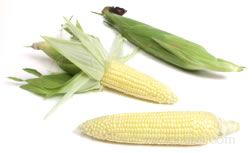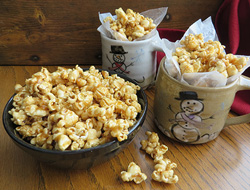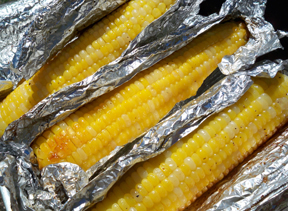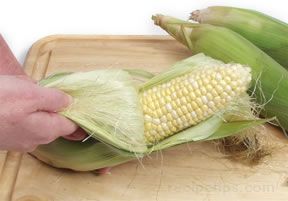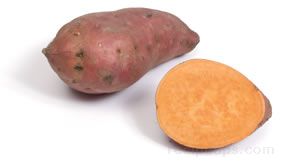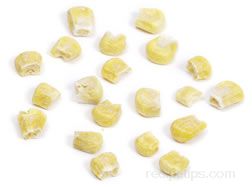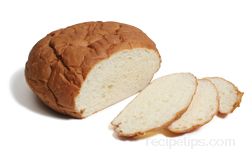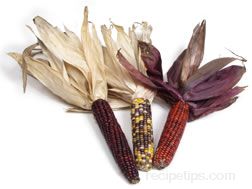Although there are many different Sweet Corn varieties, the yellow with yellow kernels and white containing all white kernels were the first to become favorites among consumers. During the late 1950's and into the 60's, agricultural research developed new varieties of Sweet Corn which contained higher levels of sucrose, referred to as "sugar enhanced" varieties. In addition, hybrid corn with multi-colored kernels were also produced from research to add to the sweeter flavored types available. Several of the hybrid varieties include: white and yellow Sweet Corn that may be referred to as peaches and cream or butter and sugar corn and a red or scarlet colored Sweet Corn that develops its red color from the substance anthocyanin growing naturally in the corn as an antioxidant. Sweet Corn has a higher sugar content than other types of corn, but the sugar begins to convert to starch after it is harvested, so it can lose some flavor and sweetness after several days. Sweet Corn has the best flavor when it is eaten freshly picked, especially the sugar enhanced varieties that should be eaten or canned shortly after being harvested.
When selecting sweet corn, look for husks with good green coloring and pale colored silks. To check the freshness, pull the top of the husk away from the ear and pierce a kernel with your fingernail. If the kernel releases a slightly cloudy juice it is typically a fresh batch. To store sweet corn, keep it in a cool location or refrigerate it.
To prepare sweet corn for cooking, simply remove the husks and the silk from the ears. A tip for removing silk when shucking corn is to use a damp paper towel for collecting the silk. Moisten the paper towel and hold it against the cob, moving the towel down the cob and allowing the silk to stick to the towel. It is a good method for removing small strands of silk that often adhere to the cob after the leaves are removed.
Sweet corn is most often cooked using the boiling method in a large pot of water. It is also delicious when grilled. Sweet corn is often placed on the grill with the husk intact. The husk can become quite charred during the cooking process, but the corn is sweet and moist with a distinctive grilled flavor. When grilled without the husk, sweet corn is usually wrapped in aluminum foil after removing the husk. This eliminates the mess involved in removing the charred husks after cooking, but the grilled flavor is a bit less pronounced.

